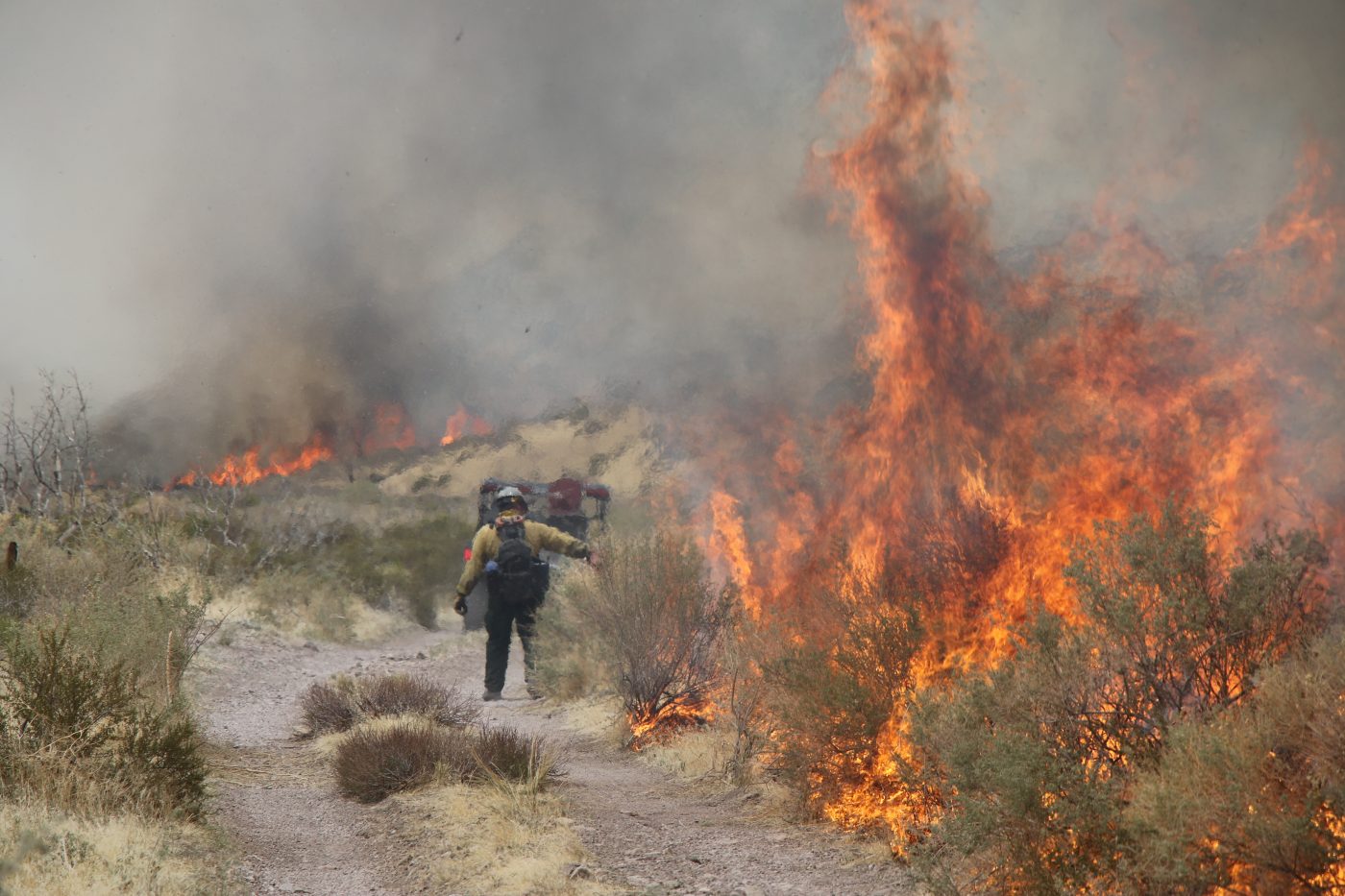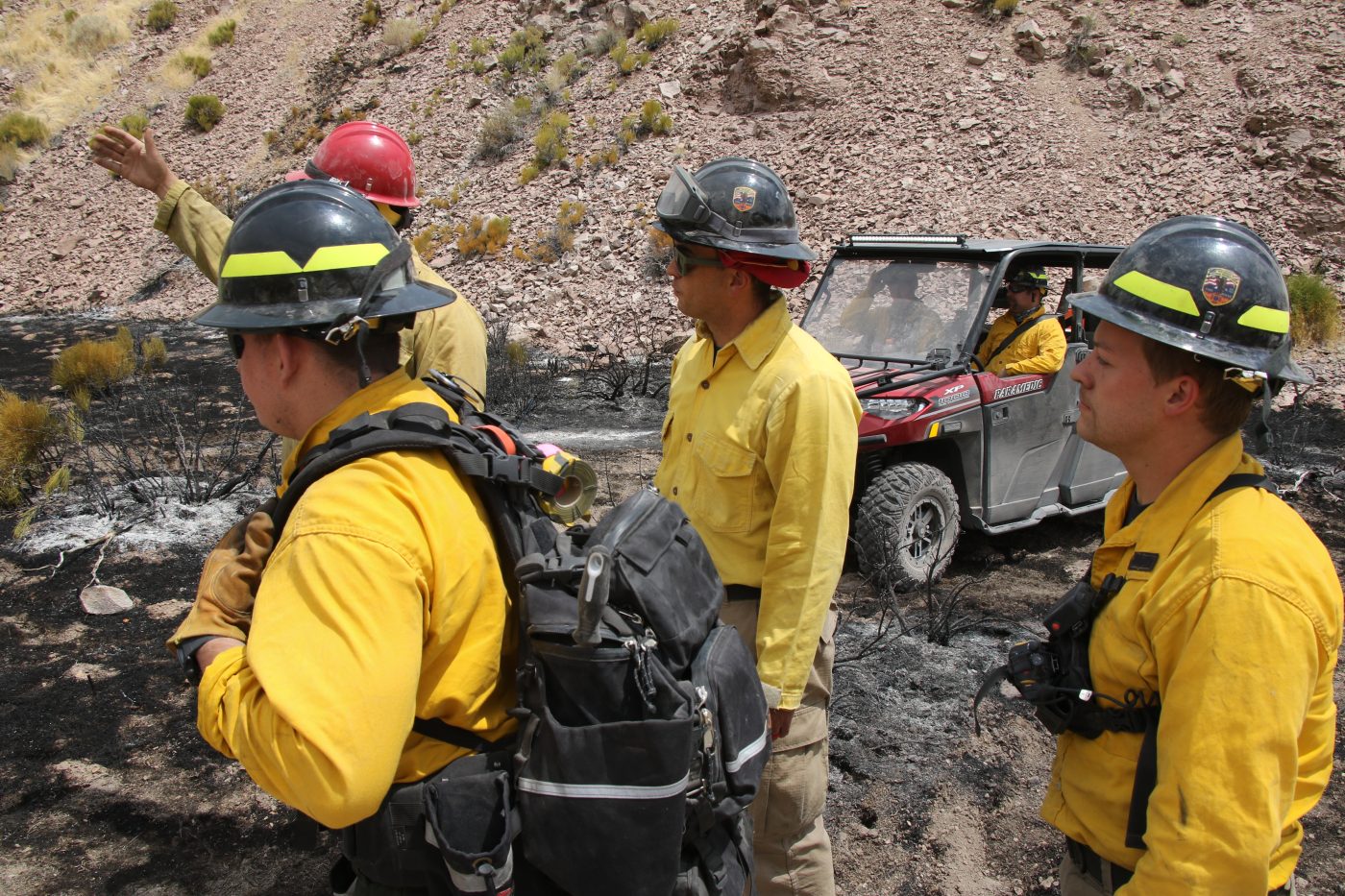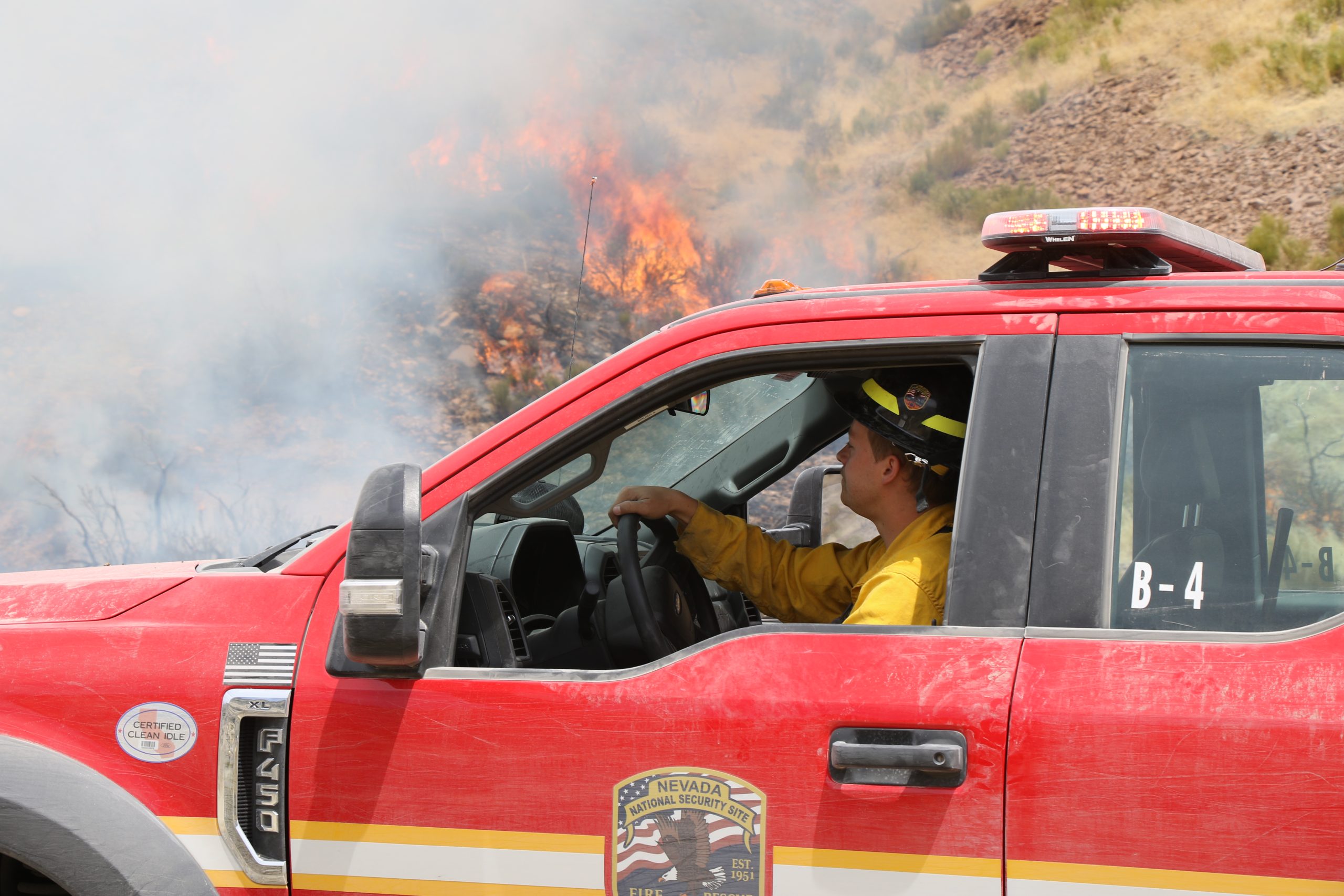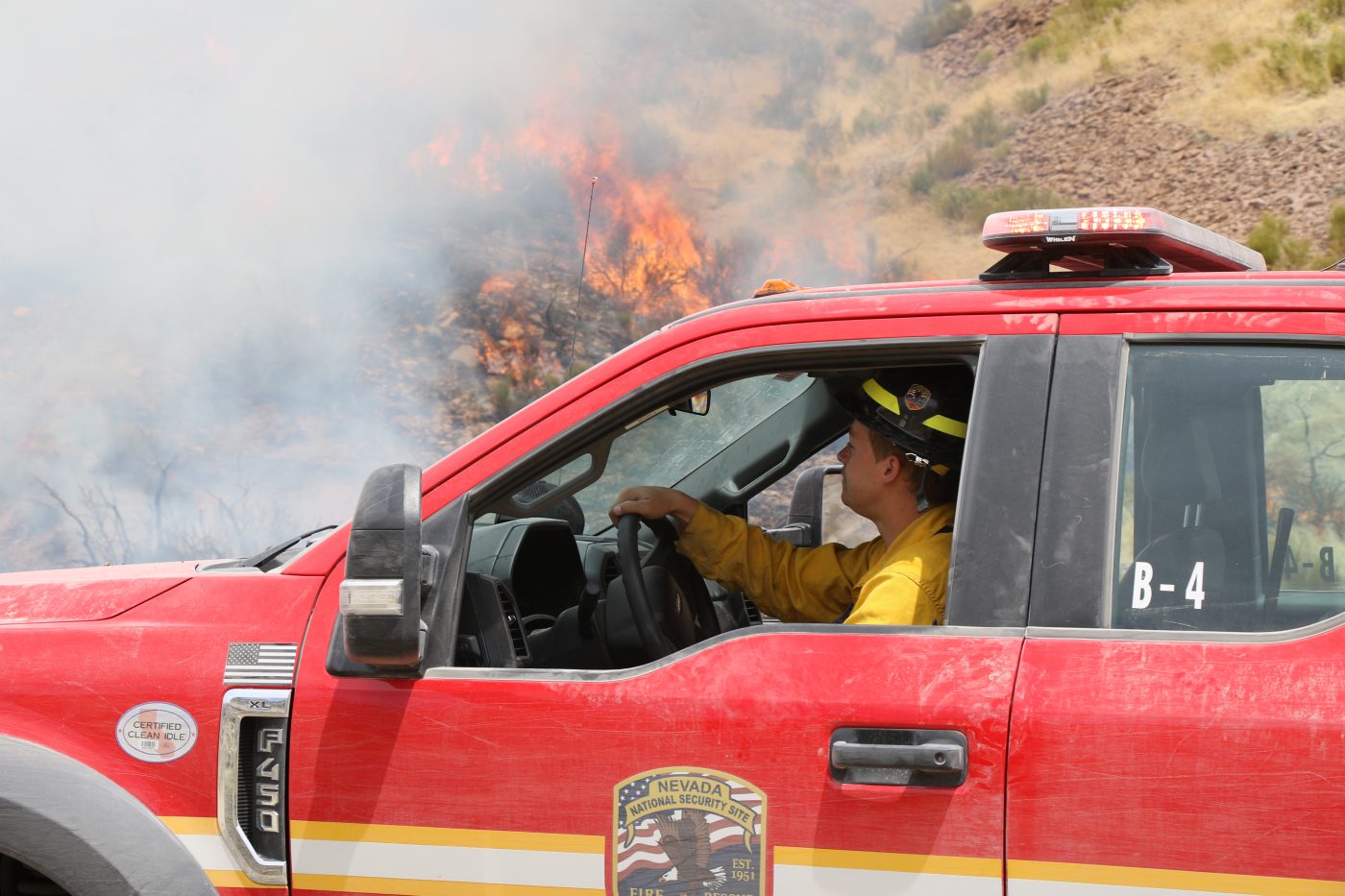While the Nevada National Security Site (NNSS) is currently at the height of wildland fire advisory season, precautions to protect the Site’s 1,355 square miles take place year-round.
A team of over 70 within NNSS Fire & Rescue (F&R) supplies life safety emergency services for nearly 3,000 NNSS employees and nearby county and state agencies through mutual aid partnerships. It also maintains wildland fire prevention and response measures for NNSS’ varied landscape, encompassing infrastructure supporting NNSS’ Stockpile Stewardship and Global Security mission areas.
Integrated approach
Constant collaboration with the NNSS Operations Command Center, the National Oceanic and Atmospheric Administration’s Air Resources Laboratory Special Operations and Research Division, environmental, and roads and grounds teams are essential to wildland fire monitoring and readiness. This is particularly critical during Southern Nevada’s monsoon season, which brings heightened lightning threats. Regular risk assessments are conducted to evaluate the terrain and potential sources for fires.
Though less than eight percent of the Site has radioactive surface contamination, and regular surveying shows only naturally occurring radiation at background levels, NNSS F&R works steadfastly to prevent fires from reaching those areas. In 2021, the Cherrywood Fire entered a portion of the Site with remnant radiological material dating back to a Cold War-era test, burning nearly 20,000 acres of NNSS land. The resulting nine-day response was an intricate choreography of fire watch, containment lines, aerial drops, rapid weather changes, precautionary area closures and asset coordination. NNSS deployed radiological surveys for personnel and equipment, as well as air sampling, to ensure there was no risk to health or human safety.
The event reaffirmed that NNSS F&R’s unique terrain preparations can alter standard wildland fire response. “The Cherrywood Fire shaped our approach,” said NNSS F&R Deputy Chief Dakota Vaughn-O’Brien, who leads wildland fire oversight. “It’s more important than prevention — it’s about being proactive.”
During a large-acre fire like Cherrywood, NNSS F&R utilizes mutual aid partnerships with agencies like the Bureau of Land Management to support ground and air containment. Interagency capabilities are regularly exercised during classroom training and onsite exercises.


Fleet modernization
NNSS F&R recently enhanced its own response capabilities with the acquisition of a Type 3 firetruck, specially designed to combat wildfires in rural settings. Another Type 3 truck is on the way to support the NNSS’ two fire stations. Three additional engines — a Type 1 structural fire engine and two Type 6 brush engines offering off-roading features – will join the fleet in late 2024/early 2025. Final inspections and acceptance testing of each vehicle is conducted at the manufacturer. Once accepted, they are shipped to the NNSS for final processing through NNSS Fleet, Fuel, and Equipment. The additions are substantial, as prior to 2017, the most recent heavy fleet additions were in 2006.
“The impact is big,” said Deputy Chief Vaughn-O’Brien. “It’s significant to see the commitment to helping our fire department out through our Type 3, 1, and 6 engines.”
NNSS F&R continues to explore additional technologies that can enhance wildland fire monitoring, such as identifying how drones could be used in designated areas. The department uses tools made available through the National Interagency Fire Center, which leads local, geographic area, and national-level interagency coordination and resource mobilization standards.
“F&R continues to partner with internal and external agencies to provide fire prevention, mitigation, and suppression activities toward wildland fire management of the NNSS,” added Deputy Chief Vaughn-O’Brien. “As the NNSS mission expands, it’s critical that we increase our readiness, to ensure activities at the site can be conducted safely without the threat of wildland fires impacting our people and the mission.”
For more information about NNSS F&R operations, visit https://nnss.gov/mission/security-and-emergency-services/fire-and-rescue/.


